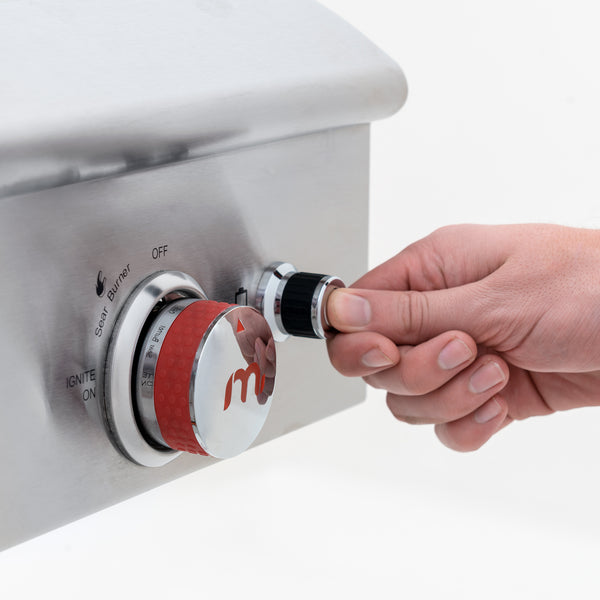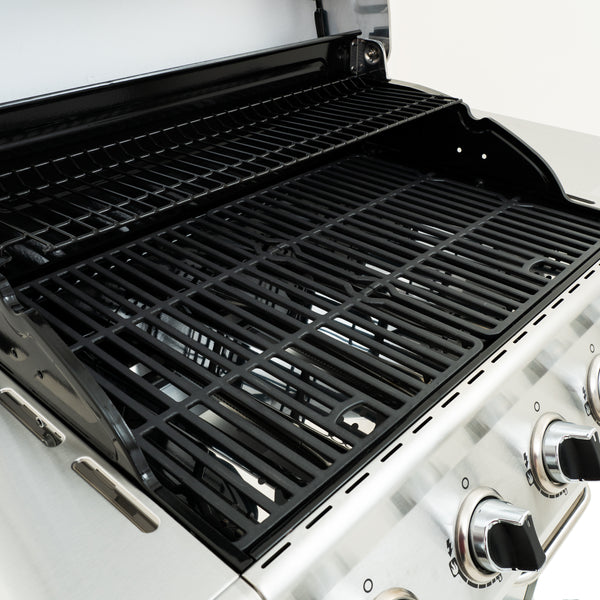
Trouble Shooting Guide: Gas Regulator
It's perfect out, and what does that mean? Grilling fun for the whole family. Who doesn’t love the taste of that perfectly cooked hamburger or hotdog in the backyard or by the poolside, relaxing in the sun while enjoying a delicious meal?
That’s why, when you have a problem with your gas regulator, it can be so frustrating. Do you need a gas grill regular replacement, or are there other fixes you can try out before replacing it?
It can be stressful to find yourself in this situation, especially if you’re about to have a big barbecue.
That’s why we’ve put together this article. In it, you’ll learn everything you need to about troubleshooting your gas regulator.
Finally, you can figure out what’s wrong with your gas grill, repair it, and get back to grilling! Read on to learn more.
What Are Gas Grill Regulators and What Do They Do?
To understand how to troubleshoot your gas regulator, you first need to understand what it is and what it does. In this section, we’ll cover what a regulator is, what a valve is, and whether you need the regulator to operate your gas grill.
What Is a Regulator?
A propane gas regulator, also known as an LP gas regulator, is a part of your grill that regulates the gas flow between the propane tank and the heating appliance. You might have also heard it referred to as a propane regulator or propane tank regulator.
This part of your grill has several purposes. These include being a safety feature between the grill and propane tank, regulating pressure, and controlling gas flow.
Basically, it funnels the propane to a pressure level that’s safe to use.
If your regulator isn’t functioning properly, you could end up having a problem with your gas grill not lighting.
What Is a Regulator Gas Valve?
When trying to figure out what’s wrong with your grill, you might have taken a look at the regulator and noticed that it’s attached to a shutoff valve. By shutting it off, you can stop the flow of gas. Additionally, you can adjust the valve to the regulator to control the pressure.
This valve is also referred to as the bypass valve. When it’s stuck, it might be difficult for the gas to reach the burners, which may be why you’ve considered the option to reset the gas grill regulator.
The valve itself is a small plastic piece that’s housed within the regulator. If there isn’t any pressure coming through or too much pressure, the valve will cut off the gas supply automatically.
This is a safety feature, but sometimes, it can be the reason why your gas grill isn’t working.
Do You Need a Regulator to Operate Your Gas Grill?
To operate your gas grill safely, you need a regulator. It will keep you safe while you’re running gas through it to light your grill, keeping the flames at just the right height. It will also keep you safe from any potential gas explosions or leaks.
In addition to being a safety feature, it is also a necessary part of your grill to function properly.
How to Tell if Your Gas Grill’s Regulator Is Bad
There are several signs that show that your gas grill’s regulator is bad. These include your burners lighting up unevenly, yellow/orange or lazy flames, flames that float above the burner ports, and a popping sound when you turn the gas burners on or off.
Other signs include heavy rust or soot deposits on the burners, flames that spill out of the burner, flames coming out of the burner air intake, and roaring noises coming out of the burners.
If you have any of these issues, it’s time to troubleshoot your gas regulator. We’ll go through these steps now.
How to Test Your Gas Grill Regulator for Leaks
There are several steps you need to take to test your gas grill regulator for leaks, which could cause your flames to burn low or not burn at all. Let's jump right in!
Prepare Your Soapy Solution
First, you have to prepare a solution that’s half water and half dish detergent that’s ammonia-free. You can use a spray bottle to apply it, or you can use a brush, dipping it into a dish or bowl of the soapy solution.
Place the Propane Tank Properly
The next step is to place the propane tank properly. This involves putting it into the compartment opening for the propane tank. Then, you’ll attach it to the regulator coupling nut. To do this properly, you should be turning the nut clockwise.
Apply the Solution
Next, use a pastry brush or spray bottle to apply the solution to the manifold connection, gas hose, coupling nut, and regulator. When applying it to the gas hose, make sure that you cover all of its length and each end of the hose.
Turn on the Valve
Now you should turn on the valve by switching the propane tank valve to the ON position. If you notice that bubbles are appearing and growing in the solution, this means at least one of the connections isn’t sealed properly.
Tighten all the connections, then do this test again. If bubbles still appear, then you should have the leak repaired by a professional.
How to Reset the Regulator on Your Gas Grill
Now, we’ll cover how to reset the regulator on your gas grill. While you don’t need any additional equipment to do this, you will need to know your way around the grill. The first step is to turn every single main burner control knob off by switching them to the OFF position.
Next, turn off the propane tank gas valve by twisting it clockwise.
Now, turn the regulator coupling nut counter-clockwise. This will make it possible for you to remove it from the propane tank.
Once you’ve removed the regulator coupling nut, you should put it, as well as the gas hose and regulator, aside.
Now, turn the burner knobs on. When doing this, turn them to the HIGH setting. Leave them on for 10-15 minutes.
This way, you can bleed gas from the gas line. Once 15 minutes is up, return the burner knobs to the OFF position.

Now, turn the regulator coupling nut clockwise on the propane tank to re-attach it. Then, turn the propane tank gas valve counter-clockwise until it stops turning to open it.
Finally, ignite the burners. Do this according to your Owner’s Manual instructions.
How to Replace Your Gas Regulator
For this troubleshooting method, you’ll need two adjustable wrenches and a new gas grill regulator part. You also need to have a solution that’s 50% water and 50% dish detergent that’s free of ammonia. Now, you’re ready to get started.
Once you have these pieces of equipment, you should turn off all the grill’s main burner control knobs, putting them in the OFF position.

Next, turn the propane gas tank valve to the OFF position by turning it clockwise.
Now, turn the regulator coupling nut counter-clockwise so you can remove it from the propane tank.
Next, remove the propane tank. Then, find where the brass fitting connects to the regulator’s gas hose manifold. This should be on the opposite end of the hose.
With your adjustable wrench, turn the brass fitting counter-clockwise to disconnect it. While disconnecting, use another wrench to secure the manifold.
Next, dispose of the old gas hose and gas regulator. Now, attach your new regulator gas hose to the brass fitting by turning it clockwise. Do this until it’s hand-tight.
Now, with your two wrenches, make the brass fitting tight upon the manifold. Do not over tighten.
Now, set the propane tank in its opening and turn the regulator coupling nut clockwise on the propane tank to re-attach it.
Additional Troubleshooting
Finally, once again apply your soapy solution and perform the same test as directed above. If you continue to have issues, you may need additional replacement parts or to continue troubleshooting. Remember not to use the grill during this time, as using it with a leak is dangerous.
How to Order a Gas Grill Regulator Replacement
Now that you’ve learned all about how your gas regulator works and gas grill regulator replacement, you may need to order a replacement gas grill regulator. To do this, simply visit MyGrillParts.com and enter your grill’s model number. You’ll then be redirected to all of your grill model’s available replacement parts, including its regulator replacement.
If you can’t find the grill replacement part you’re looking for, please feel free to contact us.
We’re more than happy to assist – and get you back to grilling in no time!


